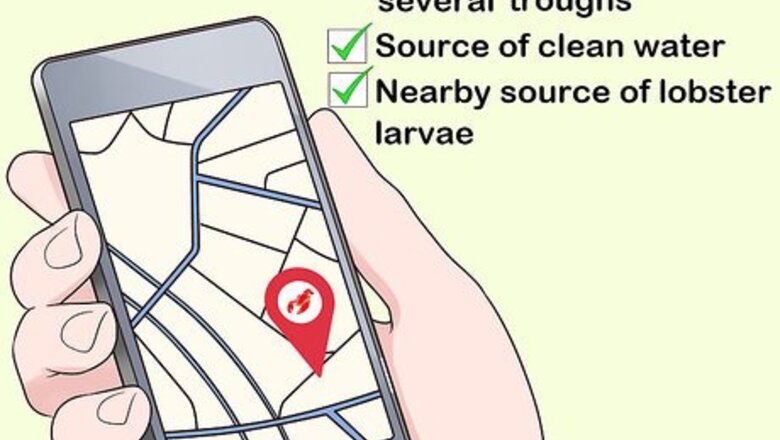
views
Creating a Good Environment for Your Lobsters

Find a suitable location for your farm. A successful location for a lobster farm will require 3 things: enough space to set up several troughs, a source of clean water (free from pollutants and waste), and a nearby source of lobster larvae. Look for a location with all 3 of these vital characteristics. Although your farm does not need to border the ocean, if you are not close to an ocean, it will be difficult for you to obtain lobster larvae, since they do not ship well. Natural sunlight also helps lobsters grow, so outdoor troughs are ideal. Most lobsters live in salt water, so your you will either need a direct source of seawater, or you can purchase a kit to salinate the clean water you have.
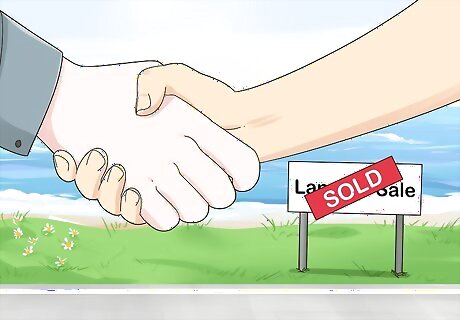
Rent or purchase the land for your farm. Once you have located the best place for your farm, rent or purchase the land. Since you will be using troughs to house your lobsters, you will not need to make modifications to the land. For this reason, both renting and purchasing property will work fine. Of course, if you have the means to buy a property, this is a better investment in your business. The land does not need to be directly on the water. If the land borders a source of salt water, this can be helpful, but it is not crucial.
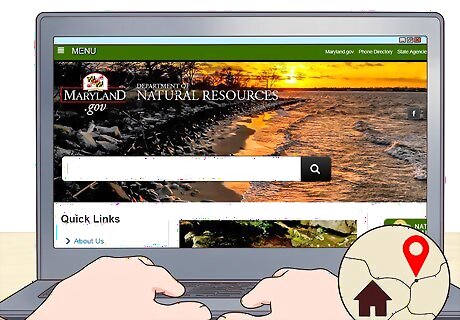
Check with your Department of Natural Resources to find out if you need a permit. Locate the Department of Natural Resources for your area (this could be run by your city, county, or state/province). Contact the DNR and inquire about any lobster farm regulations. If you are required to have a permit, fill out the necessary forms, pay any fees, and acquire your permit before you begin farming.

Set up troughs to house your lobsters. Provide a good environment on the lobster farm by purchasing several solid troughs. These will not only keep the lobsters contained on the farm, they will also keep them safe from outside predators. Place the troughs side by side, in even rows, so that each 1 is easily accessible. Fill your troughs with clean saltwater. Alternatively, if your lobster farm has direct access to salt water, you can house your lobsters in ocean pens. You can stock 10 lobsters weighing 0.15–0.2 kilograms (0.33–0.44 lb) in a 1 m (11 sq ft) trough/pen. Troughs can be purchased from some farm supply stores, or online.
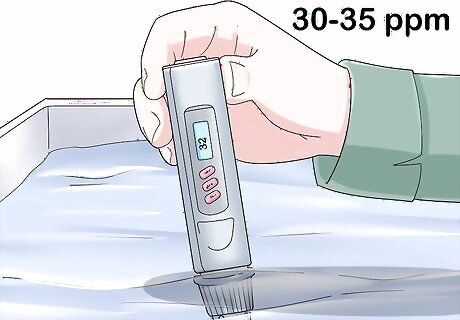
Maintain a water salinity of 30,000-35,000 parts per million. If you will be using municipal water, condition this water in order to remove chlorine and other minerals. Use a commercial marine life salt mix. Follow the instructions to achieve a salinity of 30,000-35,000 parts per million, and use a test kit to ensure that you've done everything right. Use natural seawater, if possible. Add more saline to increase the salinity. Dilute with filtered water to lower the salinity.
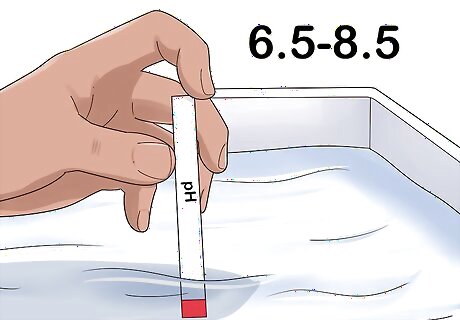
Maintain a pH between 6.5 and 8.5. Use a pH test kit to the determine the pH level of your water. If the pH is to low, add 1 teaspoon (4.9 mL) of baking soda per 19 litres (5.0 US gal), wait a few hours, and test again. If the pH is too high, place a mesh bag of peat moss into your filter. Let it run for 2 days before testing again. Do not add your lobsters to the tank until the pH is correct.
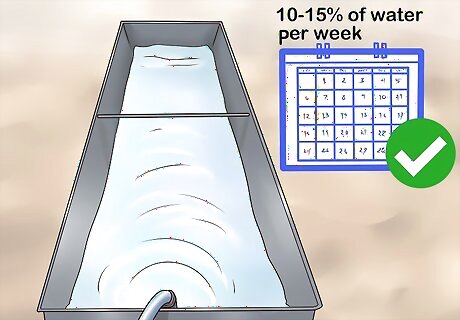
Perform weekly maintenance to keep your troughs clean. Each week, remove 10-15 % of the water in your troughs, and replace it with conditioned, salinated water. Purchase a basic water testing kit, and use it check the water’s pH and level of salinity once a week. Take a look at your filters once a week as well. Rinse your filters when needed. Replace your filters if they appear worn/damaged, or if they do not seem to be working effectively. Always condition municipal water before adding it to your troughs.

Provide good filtration to circulate oxygen and remove waste. A couple of good filters and a pump can keep your water clean and filled with oxygen. This helps your lobsters to grow and prevents disease from spreading. A gravity percolation filter system will de-gas and oxygenate your water, A mechanical biological filter will remove waste from the water supply and/or convert it to a less toxic nitrate that is safe for the lobsters. Finally, a submersible pump will circulate water through the filtration systems. Purchase these filters and install them in you lobster troughs. Keeping water clean and filtered is necessary to protect lobsters from disease, which can spread very quickly through a farm. Purchase filters and pumps from local farm supply stores, or online.
Cultivating Healthy Lobsters

Purchase larvae from a local supplier. Suppliers of lobster larvae can be found in hatcheries on the Atlantic coast of North America, the UK, the Philippines, New Zealand, and many other places that are near the coast. Once a lobster hatches from its shell, it is tiny, transparent, has large eyes and a spiny body. This is larvae, and it will move through 4 stages of larvae before becoming a recognizable lobster. Select from whatever varieties of lobster are available in your area. Choosing a supplier that is located near your farm prevents damage to the lobsters during the transportation. Avoid stocking larger types of lobster larvae with smaller types. The larger lobster larvae can eat the smaller ones.
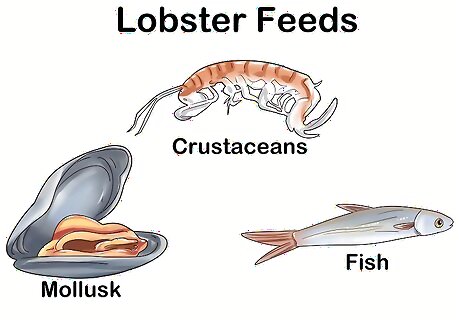
Provide lobster feed once a day. Keep the lobsters healthy and growing by feeding them. In the wild, lobsters eat small crustaceans, mollusks, and fish. Appropriate lobster feed can be purchased from the supplier of your larvae, or ordered online. If you can't find lobster food blends, you can use cod feed. Follow the instructions on your packaging for serving sizes. Try to secure a reliable source of lobster feed before you begin your farm.
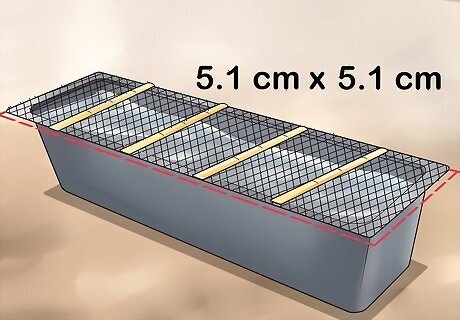
Use 2 by 2 inches (5.1 cm × 5.1 cm) netting to keep your lobsters safe. Provide netting over your troughs to prevent your lobsters from escaping. You can also place bamboo slats on the top of the troughs for added security. This will help keep your lobster hatchlings safe from predators, like birds. Netting can be purchased at many home improvement stores or online. Trevor Corson Trevor Corson, Food Historian The biggest challenge is getting the lobsters to reproduce in captivity, which requires mimicking the natural environment as closely as possible. Despite the challenges, some scientists and entrepreneurs believe that lobster farming could be the future of the industry.
Selling Your Lobsters

Locate buyers for your lobsters. Contact local grocery stores and restaurants directly (ideally in person) and offer to sell them your lobsters. Do this prior to your lobster harvest. Create a contact that outlines the terms of your agreement with a given grocery store/restaurant, including the approximate number of lobsters they will purchase, the price, and the approximate date of delivery. It is important to deliver lobsters as soon as they are harvested, so it is crucial to have your buyers in place ahead of time.
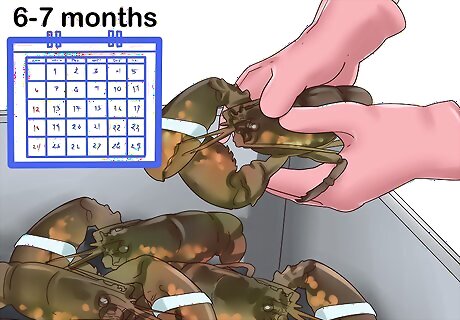
Harvest your lobsters. Lobsters can be harvested after about 6-7 months, once they reach a weight of 0.8–1 kilogram (1.8–2.2 lb). Lobsters can be scooped from their troughs using nets. Place newly-harvested lobsters in a basin filled with seawater prior to packing. Try not to harvest lobsters when it is raining. Lobsters can die if they are exposed to freshwater.
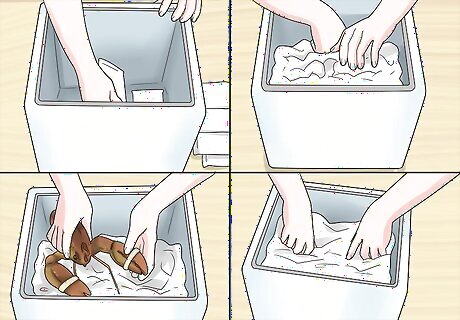
Transport your lobsters with care. Lobsters are purchased and transported live, so they can be killed immediately prior to consumption. This means that lobsters must be packaged and delivered very carefully. Wrap your lobsters in cloth soaked with seawater, and pack them in Styrofoam boxes. Never pack lobsters in fresh water. To keep lobsters fresh, store the Styrofoam boxes in ice. Deliver lobster as soon as possible after harvest.
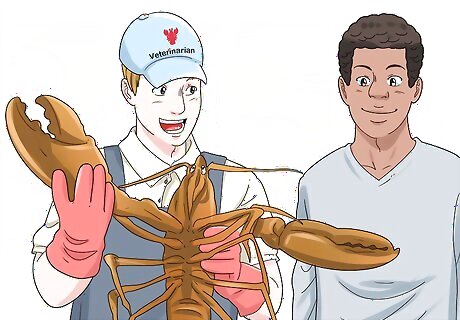
Work with a veterinarian to reduce instances of disease. If any of your lobsters should become diseased, this can wipe out the entire harvest. Work with a veterinarian to find out ways to reduce this risk. Ask a vet to evaluate your lobsters to catch any health problems early.
















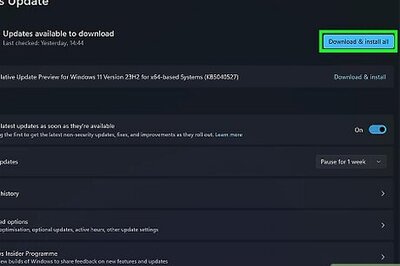


Comments
0 comment